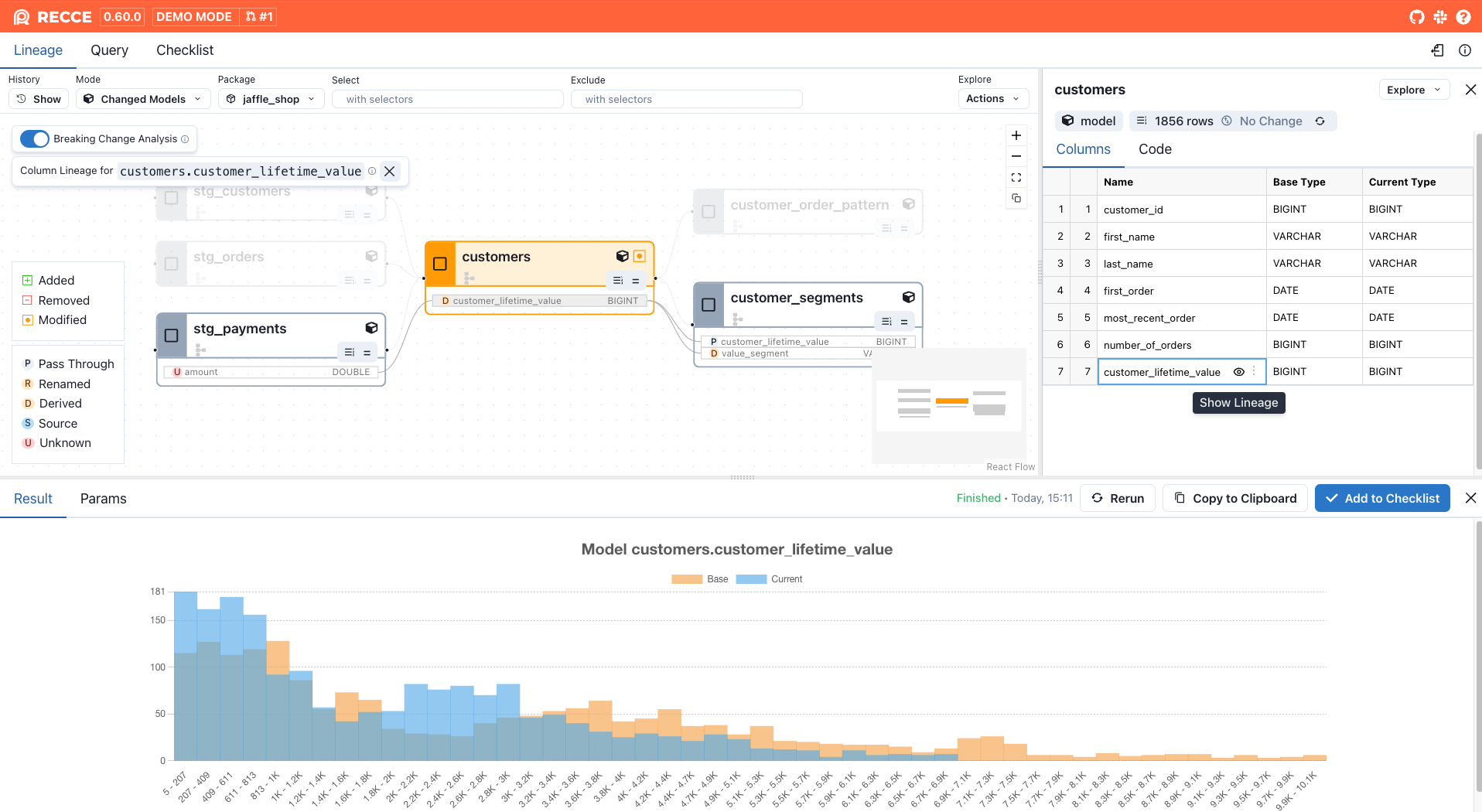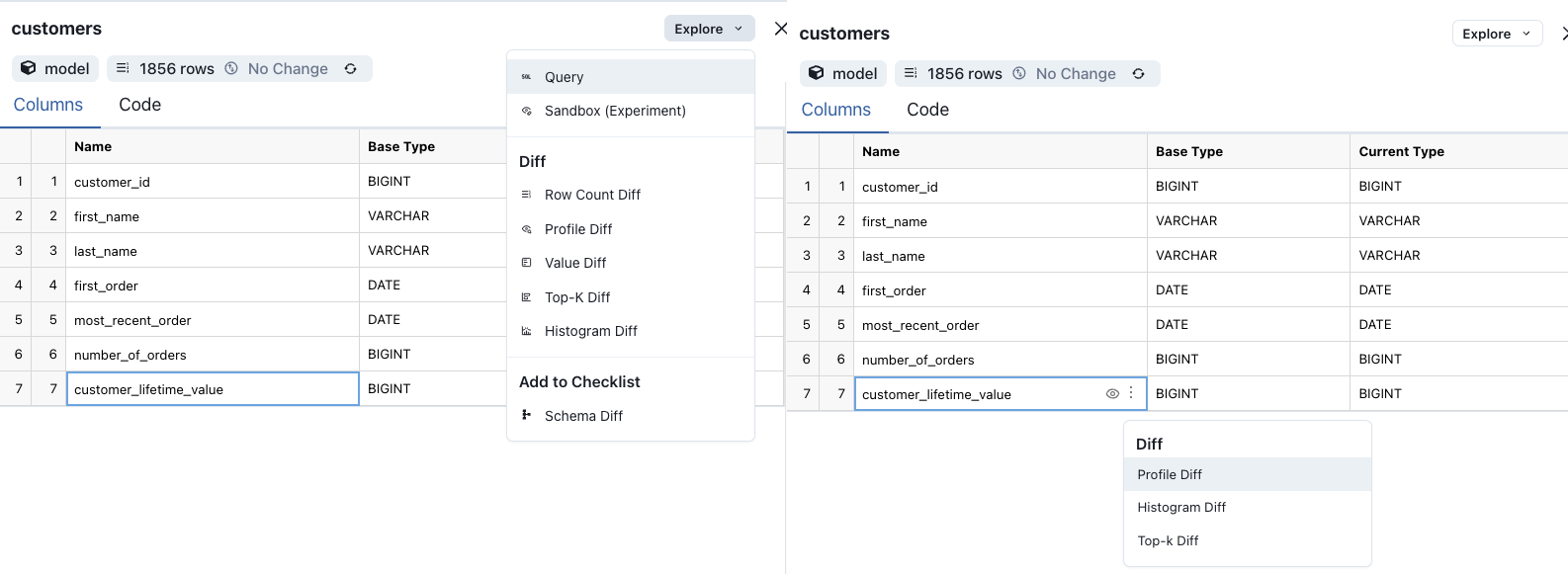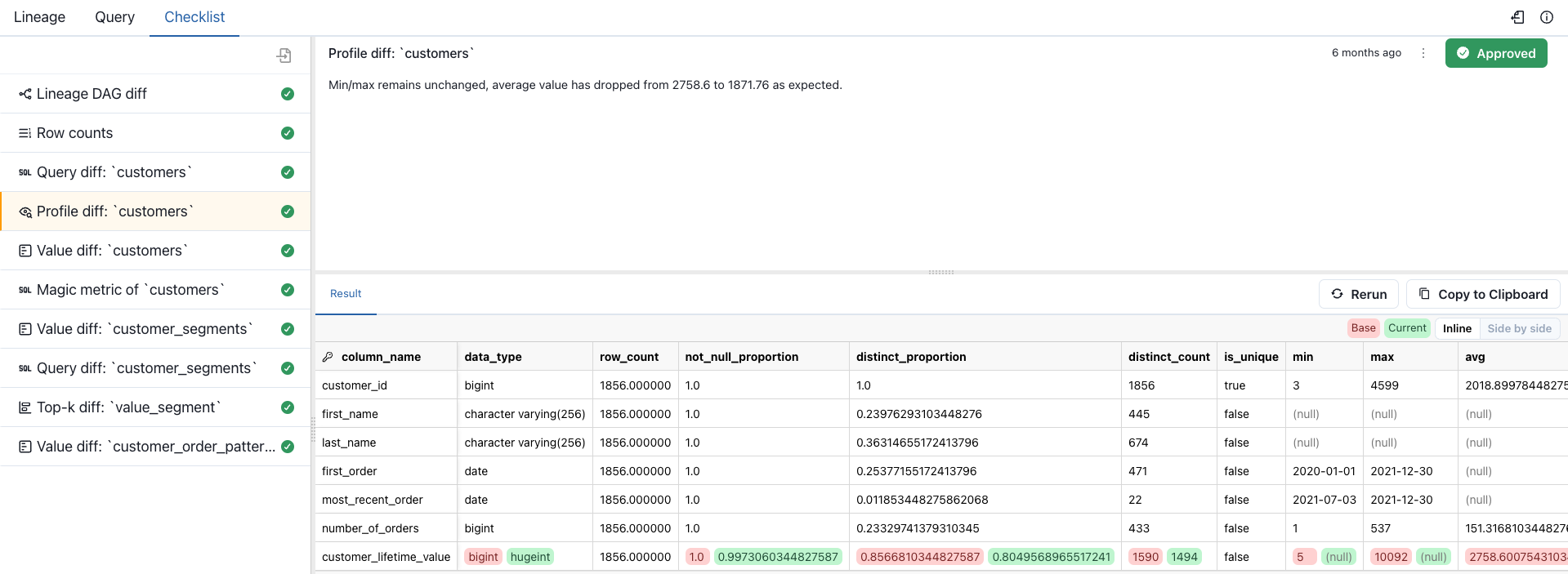What is Recce?
Recce (pronounced "wreck-E"), short for reconnaissance, helps data teams cut guesswork on downstream impact, streamline collaboration, and ship changes faster—building trust through clarity.
Open Source vs Cloud
Recce started as an open source project and now offers a Cloud version for teams seeking enhanced collaboration.
Our Open Source Project is perfect for developers who want to try locally and contribute feedback, while our Cloud product provides data teams with real-time collaboration, automatic checklist sync, and PR gating.
Compare options and choose what fits your team.
Why Recce
dbt introduced software best practices to data projects: modular SQL, version-controlled code, and reproducible pipelines.
But “bad merges” still happen. Silent data errors slip into production breaking metrics, breaking stakeholder trust.
As teams scale and more people contribute to data projects, it becomes harder to validate changes with confidence, especially when the impact spans multiple models or business domains.
Recce brings data reconnaissance into the workflow. We make it easy to create and standardize a data validation workflow by enabling you to:
- Instantly trace dependencies down to the column level
- Compare data and metrics before and after a change
- Share a clear, explainable checklist with teammates and stakeholders
The only way to know the impact of a change is to compare what it actually changes. Recce makes that fast, visible, and collaborative.
Who is Recce for?
Recce helps teams catch issues early, understand the impact of changes, and build trust in every data release. It fits naturally into the data workflow so validation becomes part of how you build, not something extra to worry about.
- Data engineers use Recce to check for downstream impact and make sure changes are safe before releasing.
- Analysts use Recce to review their own work, compare data before and after, and confirm that key metrics still make sense.
- Stakeholders use Recce to review updates with clear context, without reading SQL or digging into warehouse tables.
What You Get
Recce gives you a clear, fast way to understand what your data changes are doing and why they matter. It helps you catch problems early, verify metrics, and share your findings with others all as part of your normal workflow.
Lineage graph supports model/column levels navigation and breaking change analysis.
Model and column level diff
Checklist for collaboration
What’s included
- Lineage and impact mapping: Quickly see which models and columns are affected by a change. Navigate lineage down to the column level, and spot breaking changes with clear visual cues.
- Metric and data comparisons: Use Profile, Value, Top-K, and Histogram Diffs to compare results before and after changes. Validate things like row counts, category distributions, and numeric ranges without writing extra SQL.
- Query diff: Write and compare any two queries side by side. This is helpful when validating fixes or reviewing changes with teammates.
- Checklist for reviews and approvals: Turn your validation steps into a checklist. Add notes, rerun checks, and share the results with reviewers or stakeholders. In Recce Cloud, checklists can sync automatically and even block changes until checks are approved.
- Secure by design: Recce is SOC 2 compliant to meet enterprise security standards. It runs locally or in your private environment, and your data stays in your warehouse.


